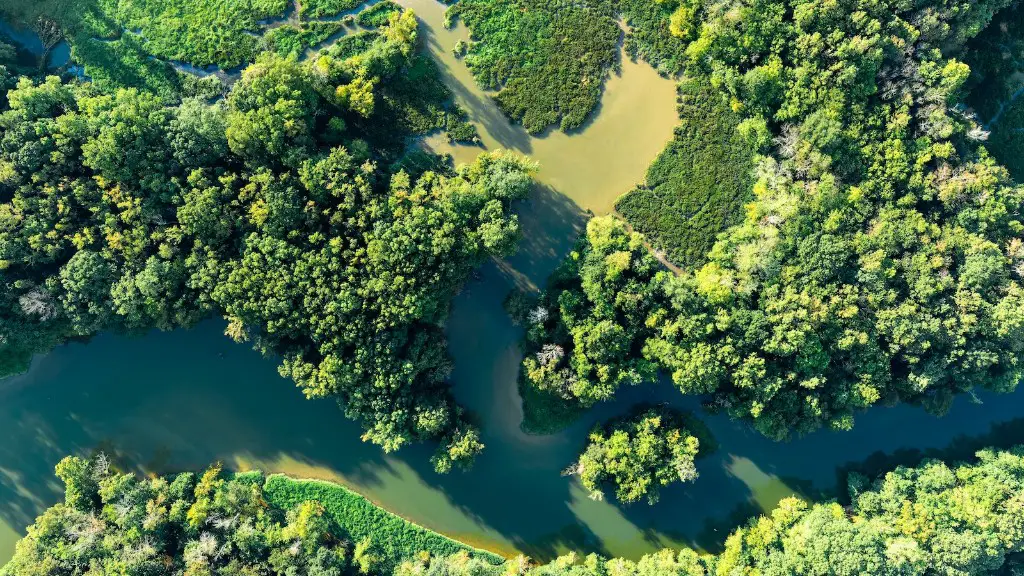The question whether one is able to swim in the Nile River needs to be answered carefully in order to assess the potential risks and dangers that may be present. The Nile River is located in the northeastern region of Africa and covers a vast area, stretching from Sudan in the south to Egypt in the north. The Nile River is considered the longest river the world and has been used as a source of water for centuries. This brings us to a very important question: can I swim in the Nile river?
The answer to this question is not as simple as it seems. It all depends on the specific location and what safety precautions are in place. Swimming in the Nile river can present a number of health and safety risks, depending on the area in which you are swimming. For instance, the water quality in the Nile River varies depending on the location and can be contaminated with a variety of pollutants and microorganisms. Certain areas of the river have also been known to contain large amounts of litter and debris, and so swimming here could put a person’s health at risk.
At the same time, swimming in the Nile River can also pose a safety risk. This is especially true during certain times of year, when the current is particularly strong and there is an increased risk of drowning. In addition, swimming in the river can also put the swimmer at risk of being attacked by crocodiles, hippos and other animals which inhabit the Nile River.
It is clear that before taking a dip in the Nile River, one must assess the potential risks and danger that it presents. A good way to do this is to seek the advice of experts. For example, if one is in Egypt and hopes to swim in the Nile River, it is a good idea to get in touch with the Egyptian authorities who can provide advice about the safest areas for people to swim.
In short, the answer to the question ‘Can I swim in the Nile River?’ depends on several factors. It is possible to swim in the river, but it is important to ensure that the swimmer is well prepared and has taken the necessary safety precautions.
Biological Risks
When it comes to swimming in the river, the most important thing to consider is the potential health risks posed by certain organisms which may be present in the river water. The Nile River is home to a large number of aquatic animals, plants, and microorganisms. Some of these organisms can have a negative effect on human health, transmitting diseases or causing irritation or discomfort.
Furthermore, the Nile River is home to several species of fish, amphibians and reptiles. These animals may also present a threat to humans, especially when provoked. Therefore, it is important to exercise caution when encountering them while swimming in the river.
In addition, pollution of the river can make it unsafe to swim in, as it could contain high levels of certain substances which can be dangerous to human health. This is especially true of Egypt, where the waterways are highly polluted due to agricultural run-off, industrial waste and sewage. Therefore, it is vital that one takes appropriate safety measures before taking a dip in the Nile River.
Safety Precautions
When swimming in the Nile River, it is important to remember to take the necessary safety precautions. For example, it is important to always swim with a partner. This will ensure that help is at hand in case of an emergency.
It is also important to take into consideration the state of the currents in the river. Swimming in areas where the current is strong could be dangerous and increase the risk of drowning. Therefore, it is important to research the area before deciding to take a dip.
Finally, it is also important to take into account the local laws and regulations. In some parts of the Nile River, swimming is strictly forbidden due to the potential risks it poses. Therefore, it is important to be aware of and comply with the rules and regulations in place in order to avoid penalties.
Time of Year to Swim
It is also important to consider the best time of year to swim in the Nile River. The river can be particularly hazardous during the rainy season, when the current is stronger than usual, and there is an increased risk of drowning. Therefore, it is advisable to avoid swimming during this period.
In addition, it is important to take into account the temperature of the water, as colder water is more hazardous to swim in than warmer water. Therefore, it is advisable to wait for the warmer months before heading for a dip in the river.
Finally, it is important to consider the level of the river. During the dry season, the water level of the river is lower, meaning that the water is shallower and less dangerous. This can make it safer for people to swim in the river. However, during the rainy season, the water level of the river is much higher, and the water is deeper, making it more dangerous for inexperienced swimmers.
Environmental Considerations
When swimming in the Nile River, it is also important to take into account the potential environmental impacts. Swimming in the river can have a detrimental effect on the local wildlife and environment. For example, the activity may disturb the wildlife and endanger endangered species, or cause sediment to be stirred up, which can be harmful to aquatic animals in the area.
Furthermore, swimming in the river can also increase the amount of pollutants present in the river water, further increasing the risk of illness and disease for both humans and animals. Therefore, it is important to take precautions to minimize the damage that one’s activities may have on the environment.
Finally, it is important to remember that the Nile River is a fragile ecosystem and all those who use it should do so in a responsible and sustainable manner. This means taking steps, such as cleaning up any litter and avoiding polluting the water, in order to ensure that the river remains healthy and can continue to be enjoyed for generations to come.
Incidents and Warnings
It is also important to be aware of the potential dangers associated with swimming in the Nile River. In recent years, there have been several warning issued by the Egyptian authorities, urging people to stay away from certain parts of the river. This is due to the potential threat of crocodiles or hippos attacking or drowning anyone who may enter the water.
In addition, there have also been several incidents of people being injured or even killed while swimming in the river. Therefore, it is important to always practice caution and take the necessary safety precautions when considering taking a dip in the Nile River.
Environmental Impacts
Finally, one must consider the potential environmental impacts of swimming in the river. While the activity may bring some health and leisure benefits, it is important to remember that it can also have an adverse effect on the environment and wildlife.
The large number of people who are drawn to the area for recreational activities often has an adverse effect on the wildlife and the ecology of the river. For example, the stirring up of sediment can disturb the breeding grounds of the aquatic animals, leading to reduced numbers of certain species. Additionally, the large amounts of debris left by swimmers can also pollute the waters of the Nile, posing a threat to the numerous species of fish and other animals that inhabit the area.
Therefore, it is important to take measures to ensure that one’s recreational activities do not have a detrimental effect on the environment. This includes taking steps to reduce the amount of litter and pollution one produces, and cleaning up after oneself when swimming in the river.





